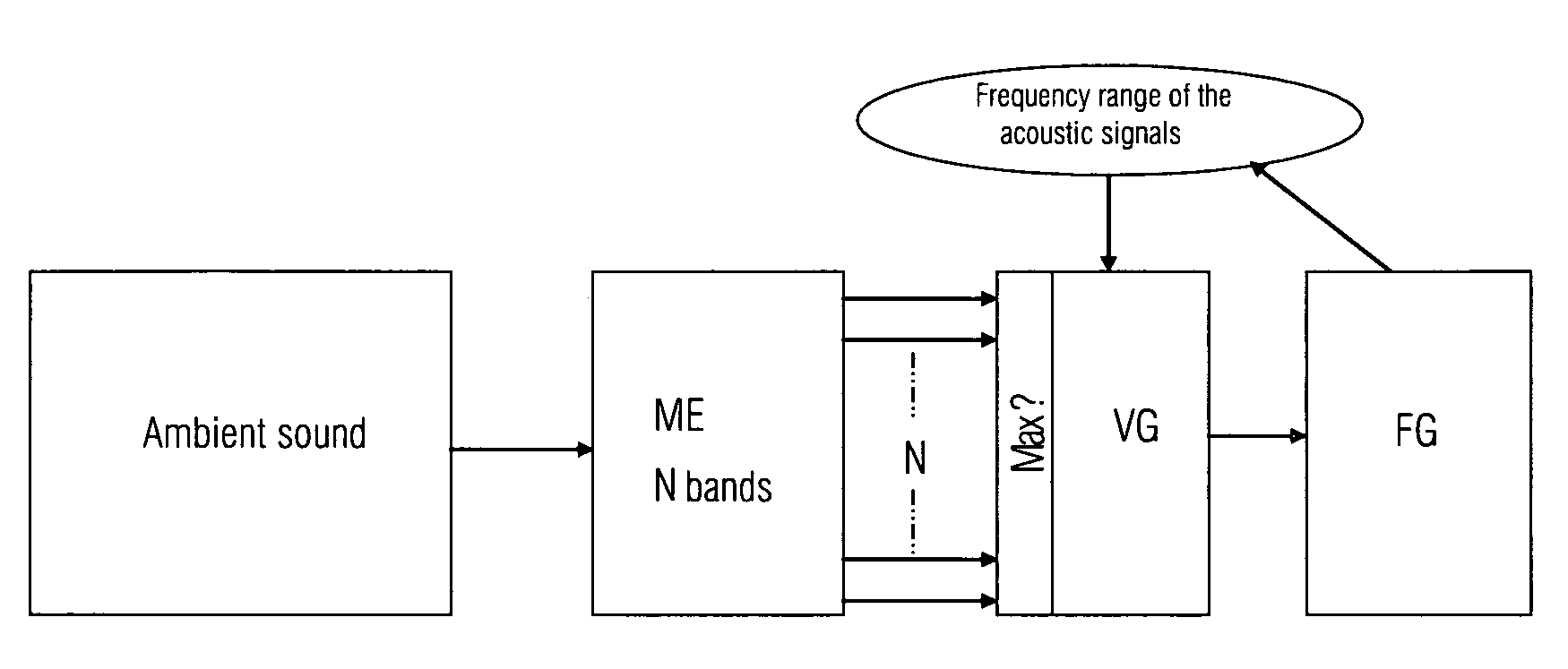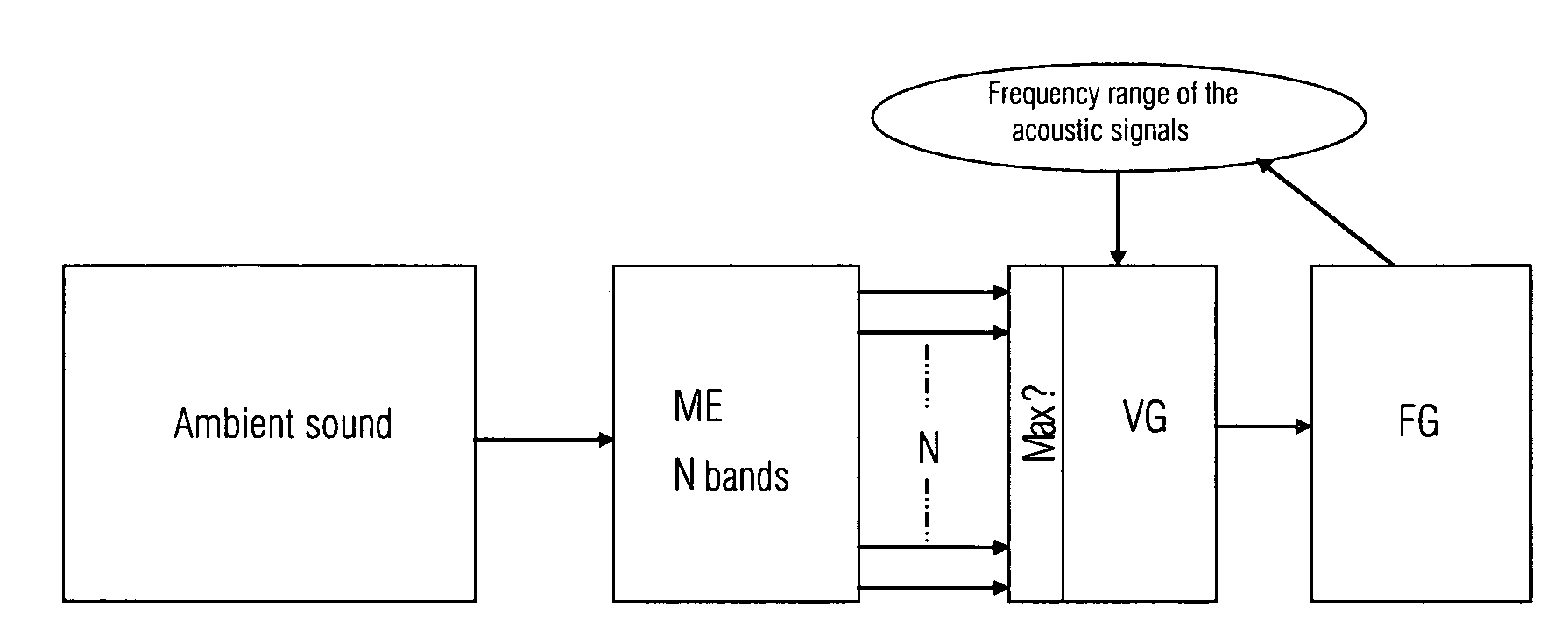Method for generating acoustic signals of a hearing aid
a technology of generating acoustic signals and hearing aids, applied in the field of hearing aids, to achieve the effect of narrow frequency spectrum and easy “masked”
- Summary
- Abstract
- Description
- Claims
- Application Information
AI Technical Summary
Benefits of technology
Problems solved by technology
Method used
Image
Examples
Embodiment Construction
[0008]The invention comprises a measuring device ME, a comparator device VG and a frequency-shifting device FG.
[0009]The measuring device ME serves for determining a frequency-band-related level maximum for the input signal of the hearing aid. The comparator device VG then firstly compares the frequency range of the maximum with that of the acoustic signals. If both are in the same range, a further comparison is made to determine whether the maximum differs by a threshold value from the level in the other bands. If so, the acoustic signals are shifted in frequency by way of the frequency-shifting device FG into a band in which they are not masked.
PUM
 Login to View More
Login to View More Abstract
Description
Claims
Application Information
 Login to View More
Login to View More - R&D
- Intellectual Property
- Life Sciences
- Materials
- Tech Scout
- Unparalleled Data Quality
- Higher Quality Content
- 60% Fewer Hallucinations
Browse by: Latest US Patents, China's latest patents, Technical Efficacy Thesaurus, Application Domain, Technology Topic, Popular Technical Reports.
© 2025 PatSnap. All rights reserved.Legal|Privacy policy|Modern Slavery Act Transparency Statement|Sitemap|About US| Contact US: help@patsnap.com


